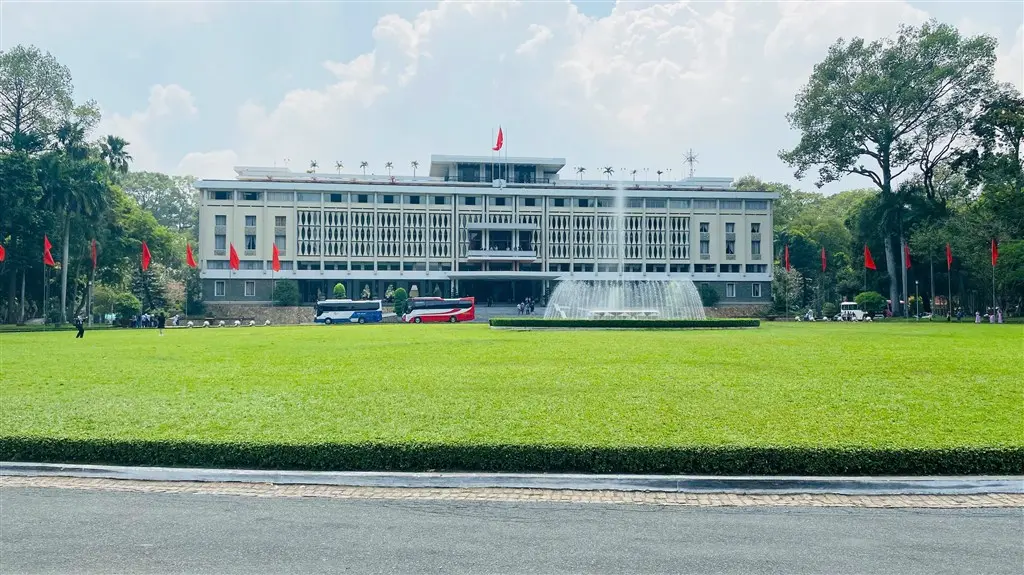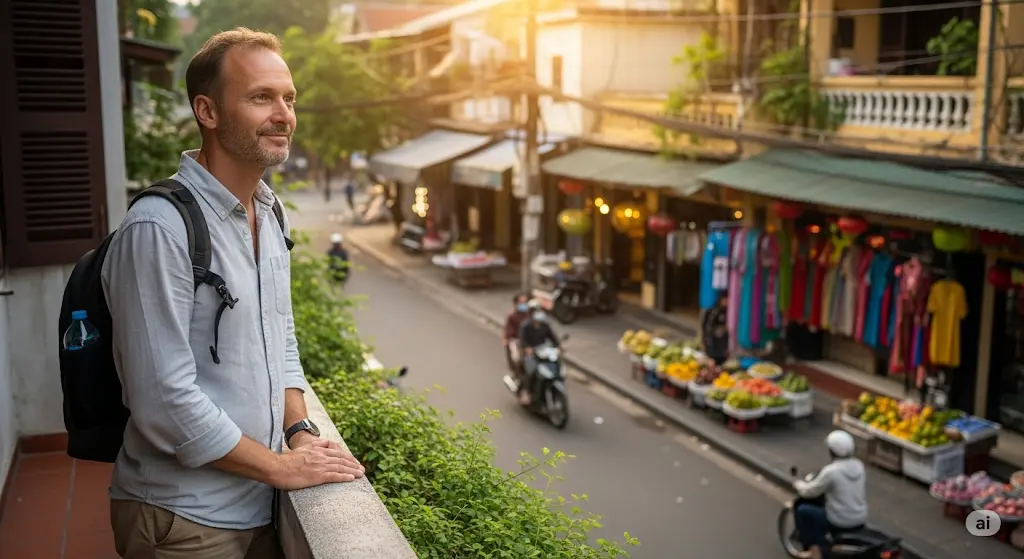EssentialVietNamtravel.com visiting vietnam A trip to Vietnam offers a rich tapestry of experiences. This country in Southeast Asia presents ancient traditions alongside rapidly developing cities. You will find breathtaking natural landscapes, from towering limestone karsts to lush river deltas. The history is complex and deeply woven into the fabric of daily life.
The food is a vibrant explosion of flavors. EssentialVietNamtravel.com is here to guide you through the process of planning and enjoying your travel to this captivating destination. Whether you are considering your first journey to Vietnam or looking for new adventures, this guide provides Vietnam travel tips to make your vacation in Vietnam smooth and memorable. We aim to answer questions like “is Vietnam a nice place to visit?” and “how to visit Vietnam?” with practical advice.
Understanding what Vietnam things to consider before going to Vietnam is key. This includes everything from visa requirements to cultural nuances. For many, especially those visiting Vietnam as an American, a little preparation goes a long way. We will cover essential vietnam tips for tourists, helping you navigate everything from flying into Vietnam to understanding local customs. This guide aims to be your trusted resource for all things related to vietnam traveling.
Planning Your Unforgettable Journey to Vietnam: A Step-by-Step Vietnam Itinerary Guide
Embarking on a journey to Vietnam requires thoughtful itinerary planning. This stage is crucial for a successful trip and ensures you make the most of your time. The first step in your vacation planning is to determine the length of your stay. Many find that a Vietnam visit ideal duration is around two weeks. This timeframe allows for a good mix of cultural immersion, historical exploration, and relaxation without feeling rushed. If you have less time, focus on one or two regions. If you have more, you can delve deeper into off-the-beaten-path experiences.
Next, consider the best time for visiting Vietnam. Vietnam’s climate varies significantly from north to south. We will discuss this in more detail later, but generally, spring (February to April) and autumn (August to October) offer pleasant weather in many parts of the country. However, your interests might dictate the best time. For example, if you want to see the rice terraces of Sapa at their greenest, a different season might be better. Research specific regional weather patterns based on your desired activities.
Once you have a timeframe and an idea of when you want to go, start outlining your route. Popular routes often include a north-to-south journey (Hanoi to Ho Chi Minh City) or vice versa. Consider your interests: are you focused on historical sites, natural beauty, culinary adventures, or adventure travel? For example, a history enthusiast might spend more time in Hue and Hoi An. Someone keen on nature might prioritize Ha Long Bay and the Mekong Delta.
A critical part of planning is understanding the visa for entry. For many nationalities, visiting vietnam visa requirements include obtaining an e-visa in advance. Check the official Vietnamese government immigration website for the most current information for your nationality. The e-visa application is typically straightforward and can be done online. Allow ample time for processing. Crucial Advice: Apply for your visa well before your intended travel dates to avoid any last-minute complications.
Budgeting is another key element. The cost of visiting Vietnam for 2 weeks can vary greatly depending on your travel style. Vietnam can be very affordable, especially if you opt for local guesthouses, street food, and local transportation. However, luxury options are also plentiful. A reasonable daily budget for a comfortable but not extravagant trip could be around fifty USD, excluding international flights. Track your potential expenses for accommodation, food, transport, activities, and souvenirs. Remember the official currency is the Vietnamese Dong.
Finally, research and book your international flights. Compare options for flying into Vietnam. Major international airports include Noi Bai International Airport in Hanoi and Tan Son Nhat International Airport in Ho Chi Minh City. Booking in advance, especially during peak season, is advisable. With these steps, your plan for going to Vietnam will start to take solid shape, setting the stage for an incredible adventure. This preparation will ensure your Vietnam holiday is well-structured.
Find the Best Flight Deals to Vietnam
Ready to book your flights? Use these powerful search engines to compare prices and find the cheapest options for your trip.
Must-See Vietnam Attractions: Exploring from Bustling Hanoi to Majestic Ha Long Bay and Vibrant Ho Chi Minh City
Vietnam boasts a wealth of attractions that cater to diverse interests. From ancient temples to stunning natural wonders, the country offers a journey through time and beauty. Your Vietnam itinerary should include a mix of these incredible sites. Understanding these Vietnam attractions is key to a fulfilling Vietnam tour.
Let’s start in the north. Vietnam, Capital City, Hanoi, is a city of contrasts. Here, ancient pagodas sit alongside French colonial architecture. Explore the bustling streets of the Old Quarter, a labyrinth of shops and food stalls. Key sites include Hoan Kiem Lake, the Temple of Literature (Vietnam’s first university), and the Ho Chi Minh Mausoleum complex. Hanoi serves as a fantastic starting point for exploring northern Vietnam and offers deep cultural immersion. The city’s energy is palpable, with motorbikes weaving through streets and the aroma of Vietnamese food filling the air.
No trip to northern Vietnam is complete without visiting Ha Long Bay. Vietnam, Primary Attraction, Ha Long Bay, is a UNESCO World Heritage site famed for its thousands of limestone karsts and isles in various shapes and sizes. The best way to experience Ha Long Bay is typically on an overnight cruise. This allows you to witness stunning sunrises and sunsets over the emerald waters. Activities often include kayaking, swimming, and visiting caves. The sheer beauty of this natural wonder makes it a highlight for many traveling in Vietnam.
Moving south, you will encounter Hoi An Ancient Town. This former trading port is another UNESCO World Heritage site, known for its well-preserved architecture. The town’s charming streets are lined with tailor shops, art galleries, and restaurants. Rent a bicycle to explore the surrounding countryside and rice paddies. Hoi An’s lantern-lit nights create a magical atmosphere, perfect for an evening stroll. It truly is a Vietnam historic town that captures the imagination.
Further south lies Ho Chi Minh City, Vietnam, Largest City. Formerly known as Saigon, this is a dynamic, modern metropolis that still retains its historical significance. Key attractions include the War Remnants Museum, the Reunification Palace, and the Notre Dame Cathedral. The Cu Chi Tunnels, a vast network of underground tunnels used during the Vietnam War, are a short trip from the city and offer a poignant look into the country’s complex history. Ho Chi Minh City provides a stark contrast to Hanoi, showcasing a more modern, fast-paced side of Vietnam.
For those seeking mountainous landscapes, Sapa in the far north offers breathtaking Sapa Terraces. These rice paddies, carved into the hillsides by ethnic minority groups, are a testament to human ingenuity and offer incredible trekking opportunities. Other notable sites across Vietnam include Hue Imperial City, the former imperial capital, and Phong Nha-Ke Bang National Park, known for its spectacular caves. Each of these destinations contributes to the rich tapestry of Vietnam things to see and do. Planning which Vietnam attractions to prioritize will depend on your interests and available time, but these highlights offer a fantastic starting point for anyone visiting Vietnam.
Choosing the Perfect Time for Your Vietnam Travel: A Guide to Seasons and Regions

Selecting the best time for visiting Vietnam significantly impacts your travel experience. Vietnam’s elongated shape means diverse weather patterns across its three main regions: North, Central, and South. There is no single “perfect” time to visit the entire country, but understanding regional climates helps you plan an optimal Vietnam holiday. This is a crucial aspect of your vacation planning.
Northern Vietnam (Hanoi, Ha Long Bay, Sapa): The North experiences distinct seasons.
- Spring (February to April): This is often considered an ideal time. Weather is generally mild and pleasant, with less rain. Temperatures are comfortable for exploring Hanoi and cruising Ha Long Bay. In Sapa, this period offers clear skies for trekking, though it can still be cool.
- Summer (May to August): Expect hot and humid conditions, with frequent, heavy rainfall, especially in July and August. Ha Long Bay can be affected by typhoons during this period, potentially disrupting cruise schedules.
- Autumn (September to November): Similar to spring, autumn brings more moderate temperatures and clearer skies. This is another excellent window for visiting northern Vietnam. Sapa’s rice terraces turn golden yellow before harvest, offering spectacular views.
- Winter (December to January): It can get surprisingly cold in the North, especially in mountainous areas like Sapa, where frost or even light snow is possible. Hanoi experiences cool, often overcast days. Ha Long Bay can be misty and cool.
Central Vietnam (Hue, Da Nang, Hoi An, Nha Trang): Central Vietnam has a more complex weather pattern, often influenced by typhoons.
- Dry Season (January to August): This period generally offers sunny skies and warm temperatures, ideal for exploring historical sites like Hue Imperial City and Hoi An Ancient Town, or relaxing on the beaches of Da Nang and Nha Trang. The hottest months are typically June and July.
- Rainy Season (September to December): This region is prone to heavy rains and typhoons, particularly from October to November. Flooding can occur in Hoi An during this time. If traveling during these months, be prepared for disruptions.
Southern Vietnam (Ho Chi Minh City, Mekong Delta, Phu Quoc): The South has a tropical climate with two main seasons.
- Dry Season (December to April): This is generally the best time to visit. Days are warm and sunny, with low humidity, perfect for exploring Ho Chi Minh City, cruising the Mekong Delta, or enjoying the beaches of Phu Quoc.
- Wet Season (May to November): Expect hot, humid conditions with daily afternoon downpours. These rains are usually short-lived and predictable, so they might not severely impact travel plans, but humidity levels are high. The Mekong Delta becomes incredibly lush during this period.
Overall Considerations for your Journey to Vietnam: For a trip covering multiple regions, the shoulder seasons of Spring (February-April) and Autumn (September-November) often provide the most balanced weather conditions across the country. Vietnam visit, best season, can be subjective, but these periods generally offer a good compromise.
If you are planning extensive trekking in Sapa, avoid the wettest summer months. If beach time is a priority, aim for the dry season in your chosen coastal region. Researching the specific microclimates within these broader regions is also a good vietnam tip. Ultimately, understanding these patterns allows you to pack appropriately and set realistic expectations for your Vietnam traveling experience.
Essential Vietnam Tourism Information: Visas, Getting Around, and Finding Great Vietnam Hotels
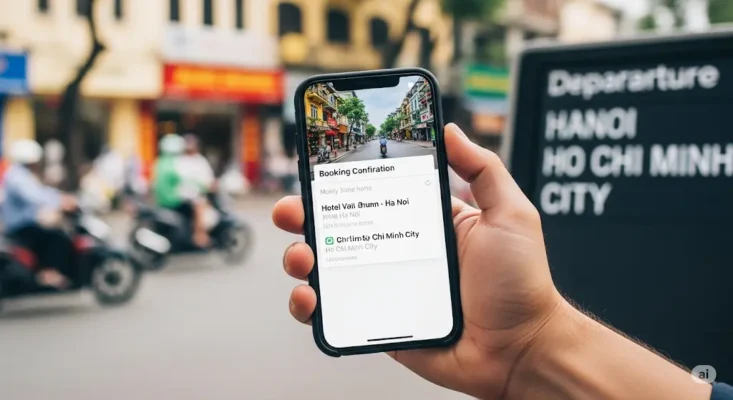
Navigating the practicalities of Vietnam tourism is straightforward with a bit of preparation. EssentialVietNamtravel.com provides these Vietnam tips for tourists to ensure your trip is smooth. Understanding visa requirements, transportation options, and accommodation will enhance your journey to Vietnam.
Visa Requirements: One of the first things to know before traveling to Vietnam is the visa situation. As mentioned earlier, visiting vietnam visa requirements vary by nationality. Many travelers can apply for an e-visa online through the official Vietnamese immigration portal. This Vietnam visit, visa requirement, usually allows for a single entry and a stay of up to 30 days (this can change, so always verify).
The process involves filling out an online form, uploading a passport photo and a scanned copy of your passport’s biographical page, and paying a fee. Processing times vary, so apply at least a few weeks before your trip. Critical Warning: Only use the official government website for e-visa applications. Avoid third-party sites that may charge exorbitant fees or be fraudulent. Some nationalities may be eligible for visa exemptions for short stays; check this carefully. For longer stays or multiple entries, you may need to apply for a visa through a Vietnamese embassy or consulate in your home country.
Getting Around Vietnam: Transportation logistics are a key part of any Vietnam tour.
- Flights: For long distances, such as between Hanoi and Ho Chi Minh City, domestic flights are efficient and relatively inexpensive. Airlines like Vietnam Airlines, VietJet Air, and Bamboo Airways offer frequent services. Book in advance for better prices.
- Trains: The Reunification Express train line runs the length of the country, offering a scenic way to travel. Options range from hard seats to soft sleepers. It is slower than flying but provides a unique cultural immersion.
- Buses: Open-tour buses are a popular option for budget backpackers, connecting major tourist destinations. Local buses are even cheaper but can be crowded and less comfortable for long journeys.
- Motorbikes: Vietnam visit, common transport often involves motorbikes. Renting a scooter is popular for exploring cities or short distances. For longer trips, some experienced riders undertake motorbike journeys across the country. Ensure you have a valid international driving permit and comprehensive travel insurance that covers motorbike riding.
- Important: Traffic in major cities can be chaotic; ride with extreme caution.
- Taxis and Ride-Hailing Apps: In cities, taxis are available. Use reputable companies like Mai Linh or Vinasun and ensure the meter is used. Ride-hailing apps like Grab are widely used and often offer more transparent pricing.
Accommodation Booking: Finding great Vietnam hotels and other lodging is easy, with options for every budget.
- Hotels: Range from international luxury chains to smaller boutique hotels.
- Guesthouses (Nha Nghi): A Vietnam visit, accommodation type that is common and affordable, offering basic but clean rooms.
- Hostels: Plentiful in tourist areas, catering to budget travelers and offering a social atmosphere.
- Homestays: Offer a chance to experience local life by staying with a Vietnamese family, particularly popular in rural areas like the Mekong Delta or Sapa.
Book accommodations in advance, especially during peak season or holidays. Online booking platforms are widely used.
Money Matters: The official currency is the Vietnamese Dong (VND). ATMs are widely available in cities and tourist areas. Credit cards are accepted in larger hotels, restaurants, and shops, but carry cash for smaller establishments and markets. Inform your bank about your travel plans to avoid your cards being blocked. Bargaining is a Vietnam cultural norm in markets and with some service providers, but do so respectfully. A Vietnam visit daily budget can be managed effectively with these tips.
By understanding these essential aspects of Vietnam tourism, from how to visit vietnam regarding visas to navigating transport and finding accommodation, your experience of going to vietnam will be much more enjoyable and stress-free. These Vietnam tips for travel are designed to help you focus on the adventure.
Deep Dive into Vietnamese Culture: Traditions, Food, and Connecting with Locals During Your Vietnam Holiday
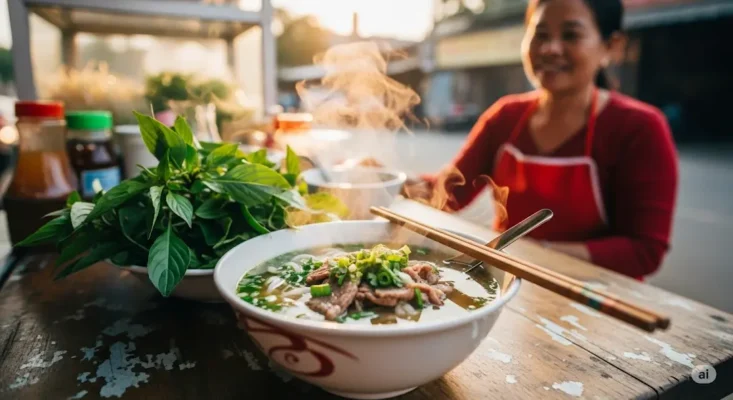
A journey to Vietnam is an opportunity for profound cultural immersion. Understanding and respecting Vietnamese culture enriches your travel experience and allows for more meaningful interactions. From ancient traditions to modern social etiquette, and especially the vibrant Vietnamese cuisine, there is much to explore.
Traditions and Etiquette: Vietnamese culture is deeply influenced by Confucianism, emphasizing respect for elders, family, and social harmony.
- Respect for Elders: Always show deference to older people. When introduced, a slight bow or nod is appropriate.
- Saving Face: Avoid public displays of anger or causing someone to lose face. Maintain a calm and polite demeanor.
- Dress Code: When visiting temples, pagodas, or official buildings, dress modestly. Cover your shoulders and knees. The traditional garment, Ao Dai, a long tunic worn over trousers, is a beautiful symbol of Vietnamese elegance, often seen on special occasions or by women in certain professions. The Conical Hat (Non La) is another iconic symbol, practical for protection from sun and rain.
- Visiting Homes: If invited to a Vietnamese home, it is customary to bring a small gift, such as fruit or sweets. Remove your shoes before entering.
- Photography: Always ask for permission before taking photos of people, especially in rural areas or ethnic minority villages.
Vietnamese Cuisine: A Culinary Adventure: Food is central to Vietnamese life and a highlight for anyone traveling in Vietnam. Vietnamese food is known for its fresh ingredients, balance of flavors (sweet, sour, salty, bitter, spicy), and regional diversity.
- Pho: Vietnam, National Dish, Pho, is a must-try. This noodle soup, typically with beef (pho bo) or chicken (pho ga), is a staple across the country.
- Banh Mi: A French-influenced baguette sandwich filled with various meats, pâté, pickled vegetables, and herbs.
- Goi Cuon (Fresh Spring Rolls): Rice paper rolls filled with shrimp, pork, vermicelli noodles, and fresh herbs, served with a peanut dipping sauce.
- Bun Cha: Grilled pork patties and slices served with rice vermicelli noodles, fresh herbs, and a fish sauce-based dipping sauce (a Hanoi specialty).
- Street Food: Vietnam has a vibrant street food culture. Do not be afraid to try food from street vendors; it is often the most authentic and delicious. Look for stalls with high turnover and many local customers. This is where you find truly good in vietnam food.
- Dining Etiquette: Chopsticks are the primary utensils. When not using them, rest them on a chopstick rest or across your bowl, not sticking upright in the rice (which resembles incense for the dead). It is common to share dishes in a group setting.
Connecting with Locals: Vietnamese people are generally friendly and hospitable, especially outside of the main tourist crush.
- Learn Basic Phrases: Knowing a few words in Vietnamese, spoken language, Vietnamese, like “Xin chào” (Hello) and “Cảm ơn” (Thank you), will be greatly appreciated.
- Be Open and Curious: Show genuine interest in their culture and way of life. Ask questions respectfully.
- Markets: Local markets are fantastic places to observe daily life and interact with vendors.
- Homestays: As mentioned, staying in a homestay offers an excellent opportunity for deeper cultural exchange.
Engaging with the local culture responsibly and respectfully will undoubtedly be a rewarding part of your vacation in Vietnam. This cultural immersion offers insights that go beyond typical tourist experiences, making your Vietnam holiday more memorable. Remember that the Lotus Flower is a national symbol representing purity and beauty, while the Dragon symbolizes power and good fortune, and Bamboo represents resilience – all integral parts of the Vietnamese spirit.
Explore Vietnam Further: Unique Adventures in the Mekong Delta and Beyond
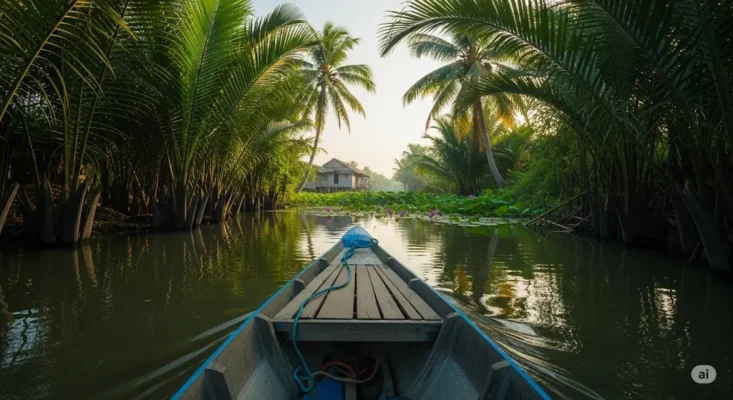
While classic destinations like Hanoi and Ha Long Bay are essential, Vietnam offers a wealth of unique adventures for those looking to explore Vietnam beyond the main tourist trails. These experiences provide deeper insights into the country’s diverse landscapes and local life, perfect for Adventure Travel enthusiasts and those seeking off-the-beaten-path encounters.
The Mekong Delta: Located in Southern Vietnam, the Mekong Delta is a vast maze of rivers, swamps, and islands. It is known as Vietnam’s “rice bowl” due to its fertile land.
- Boat Trips: Exploring the delta by boat is a quintessential experience. You can take day trips or multi-day excursions, visiting floating markets like Cai Rang or Cai Be, fruit orchards, and traditional villages. Witnessing the vibrant commerce on the water is a unique Vietnam thing.
- Cycling Tours: The flat terrain of the Mekong Delta makes it ideal for cycling. Ride through quiet laneways, past lush green rice paddies, and interact with friendly locals. This is a great way to experience the region’s agricultural heartland.
- Homestays: Spending a night or two in a Mekong Delta homestay offers an authentic cultural immersion. You can participate in cooking local dishes, try your hand at fishing, and learn about daily life in this unique aquatic landscape. EssentialVietNamtravel.com recommends this for a genuine connection.
- Eco-tourism: Several areas in the Mekong Delta are focusing on eco-tourism, promoting sustainable travel and conservation of the local environment and culture. Look for tours and accommodations that support these initiatives.
Mountainous North (Beyond Sapa): While Sapa is popular, the mountainous regions of Ha Giang, Cao Bang, and Ba Be National Park offer even more rugged and less-trodden paths for adventurous souls.
- Ha Giang Loop: This multi-day motorbike loop is gaining fame for its breathtaking mountain scenery, dramatic passes, and encounters with diverse ethnic minority communities. This is serious adventure travel and requires confident riding skills. Warning: Ensure you have appropriate licenses and insurance for motorbiking these challenging roads.
- Ban Gioc Waterfall (Cao Bang): Located on the border with China, this is one of the largest and most impressive waterfalls in Southeast Asia. The surrounding area offers beautiful karst landscapes.
- Ba Be National Park: Home to Ba Be Lake, Vietnam’s largest natural freshwater lake, surrounded by limestone mountains and forests. Activities include boat trips, kayaking, caving, and trekking to remote villages.
Central Highlands (Da Lat, Buon Ma Thuot): The Central Highlands offer a cooler climate and different scenery, known for coffee plantations, waterfalls, and ethnic minority cultures.
- Da Lat: Often called the “City of Eternal Spring,” Da Lat is known for its French colonial architecture, flower gardens, and surrounding pine forests. It offers activities like canyoning, mountain biking, and exploring waterfalls.
- Buon Ma Thuot: The “coffee capital” of Vietnam, offering opportunities to visit coffee plantations, learn about coffee production, and explore Yok Don National Park, home to wild elephants.
Coastal Adventures (Beyond Nha Trang): For those seeking quieter beaches or unique coastal experiences:
- Quy Nhon & Bai Xep: Less developed than Nha Trang, offering beautiful, tranquil beaches and a more laid-back atmosphere.
- Con Dao Islands: A remote archipelago with pristine beaches, clear waters for diving and snorkeling, and a significant national park. It also has a somber history as a former penal colony.
- Phong Nha-Ke Bang National Park: While known for its caves, this area also offers incredible jungle trekking and opportunities to explore vast cave systems, including Son Doong, the world’s largest cave (requires specialized, expensive expeditions).
These are just a few examples of how you can explore Vietnam further. Researching and venturing into these less-visited areas can lead to some of the most rewarding experiences of your Vietnam travel. It allows for deeper cultural immersion and a chance to witness the country’s incredible diversity, making your vacation in Vietnam truly unique.
Whether you are interested in eco-tourism, textile arts, or a spiritual retreat, Vietnam has something to offer. Preparing for these adventures might involve more logistical planning, but the payoff is a truly memorable journey. Remember, while planning your Vietnam trip, considering some of these off-the-beaten-path destinations can transform a good trip into an extraordinary one. EssentialVietNamtravel.com encourages you to step beyond the familiar and discover the hidden gems of Vietnam.

